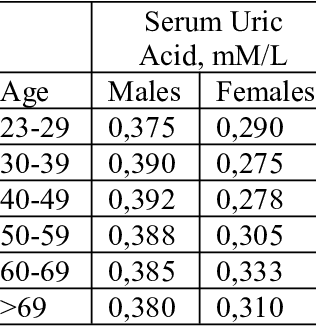Contents
Uricemia
Uricaemia is the concentration of uric acid in the blood. This uric acid results from the degradation of nitrogenous products, following the catabolism of nucleic acids which are present in the body (DNA and RNA), or the destruction of purines absorbed through food. Uric acid is eliminated primarily through the urine. An increase in uric acid levels, called hyperuricaemia, may result in gout or urolithiasis. Hypo-uricemia is sometimes observed after taking certain treatments. Adopting good eating habits helps to maintain correct uricemia.
Definition of uricemia
Uricaemia is the level of uric acid in the blood plasma. This uric acid is a product resulting from the degradation of nitrogenous products: thus, it either results from the catabolism of nucleic acids present in the body in the form of DNA and RNA, or generated by the degradation of purines ingested during of food. Uric acid is therefore a waste produced by the body, in particular when, during death and cell renewal, it degrades DNA and RNA molecules (molecules that carry the genetic information of the individual and allow its translation into proteins).
Uric acid is found in the blood, where it is distributed between plasma and blood cells, and in tissues. Uric acid cannot be transformed, as in birds, into allantoin: in fact, humans do not have the enzyme capable of detoxifying uric acid by this path of allantoin. This uric acid will therefore, in humans, be excreted mainly through the urine.
- If the blood uric acid content is high, it can accumulate in the joints and cause inflammation causing gout attacks, which are very painful.
- If it collects in the urinary tract, it can cause urolithiasis, and by the presence of stones, also cause great pain.
Why have uricemia?
Uricaemia should be performed if the doctor suspects an increase in uric acid in the blood. This biological analysis will therefore be carried out in particular:
- if the clinician suspects an episode of gout, when the patient has joint pain;
- for monitoring certain diseases where hyperuricaemia is present, such as kidney failure or certain blood diseases;
- following the taking of certain drugs such as diuretics which hinder the urinary elimination of uric acid;
- in case of overeating, which can also cause an increase in the level of uric acid;
- to monitor for hypo-uricemia;
- during pregnancy, to detect possible hyperuricemia;
- in people who have had kidney stones of uric acid or urate;
- for the monitoring of subjects already presenting an elevated uricemia, in order to identify the risks of renal complications.
This uric acid test will frequently be combined with that of the study of kidney function, by measuring the level of creatinine in the blood.
How is uricemia performed?
The biological determination of uric acid is carried out by an enzymatic technique, on serum, following a blood test. This blood sample is taken from a fasting patient, and away from a watered meal. The venipuncture is usually done at the crease of the elbow. It is performed in a medical analysis laboratory, often in town, following a medical prescription. On average, results are available within 24 hours of collection.
What results can you expect from uric acidemia?
Uric acid circulates in the blood at normal levels in women between 150 and 360 µmol per liter, and in men between 180 and 420 µmol per liter. The normal level in adults, in mg per liter, is usually considered to be between 25 to 60 in women and 35 to 70 in men. In children, it should be between 20 and 50 mg per liter (ie 120 to 300 µmol per liter).
In the event of hyperuricemia, therefore with a uric acid concentration greater than 360 µmol / liter in women and greater than 420 µmol / liter in men, the patient is at risk of gout or urolithiasis.
- Gout is a metabolic joint disease, which mostly affects the big toe, but sometimes also the ankle and knee joints. It is caused by an increase in uric acid content in the blood leading to the accumulation in peripheral joints of urate crystals, and inflammation. The treatment of acute attack often relies on colchicine. Hyperuricemia can be combated by removing any possible causes of hyperuricemia, and by xanthine oxidase inhibitors (this enzyme converts a molecule called xanthine into uric acid).
- Urolithiasis is the presence of stones in the pathway of urine excretion, caused by the formation of crystals.
Hypo-uricemia, ie a uric acid concentration of less than 150 µmol / liter in women and 180 µmol / liter in men, is mainly observed during urico-eliminating or urico-braking treatments.
The role of diet in preventing hyperuricemia and gout
In ancient times, episodes of gout were reported as a result of overeating and drinking. But it is only in the last decade that a broad understanding of the dietary factors associated with hyperuricemia and gout has come to light. Thus, quite often, overfeeding contributes to an increase in uric acidemia of the order of 10 mg / ml. More particularly, in adult males with uricaemia between 60 and 70 mg / ml, such an increase can expose to gout.
Obesity, excess red meat in food and alcoholic beverages were already recognized as triggers for gout, since ancient times. On the other hand, vegetables and plants rich in purines are not involved, as several studies have shown. On the other hand, new risk factors, which had not yet been recognized, have been identified, including fructose and sugary drinks. Finally, protective factors have also been reported, in particular the consumption of skimmed dairy products.
Gout is characterized not only by increased uric acid, possible episodes of arthritis and chronic damage, but can also be associated with severe comorbidities, and an increased risk of cardiovascular disease. Adopting healthy eating habits will help to better control uricemia and reduce the diseases associated with it.










